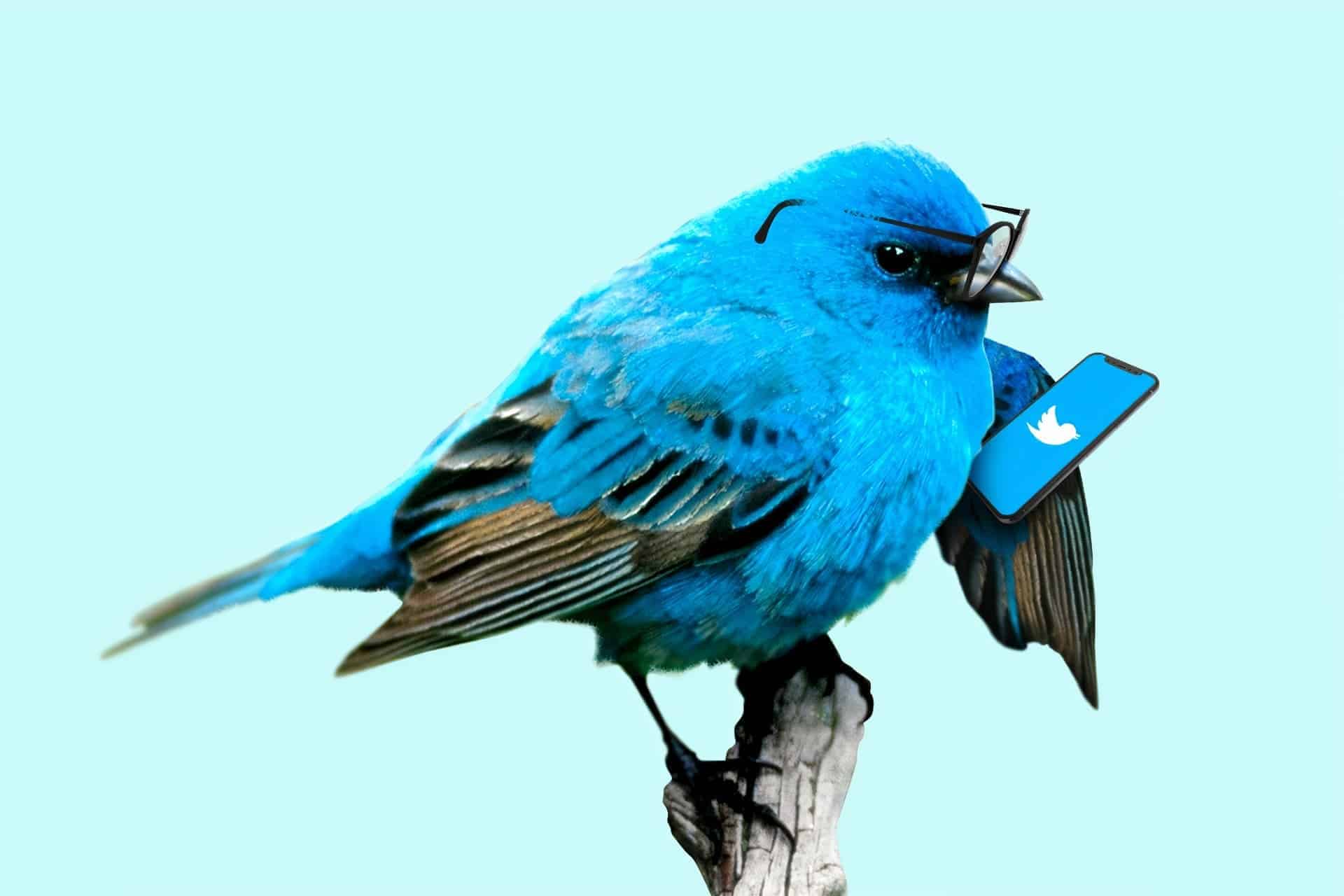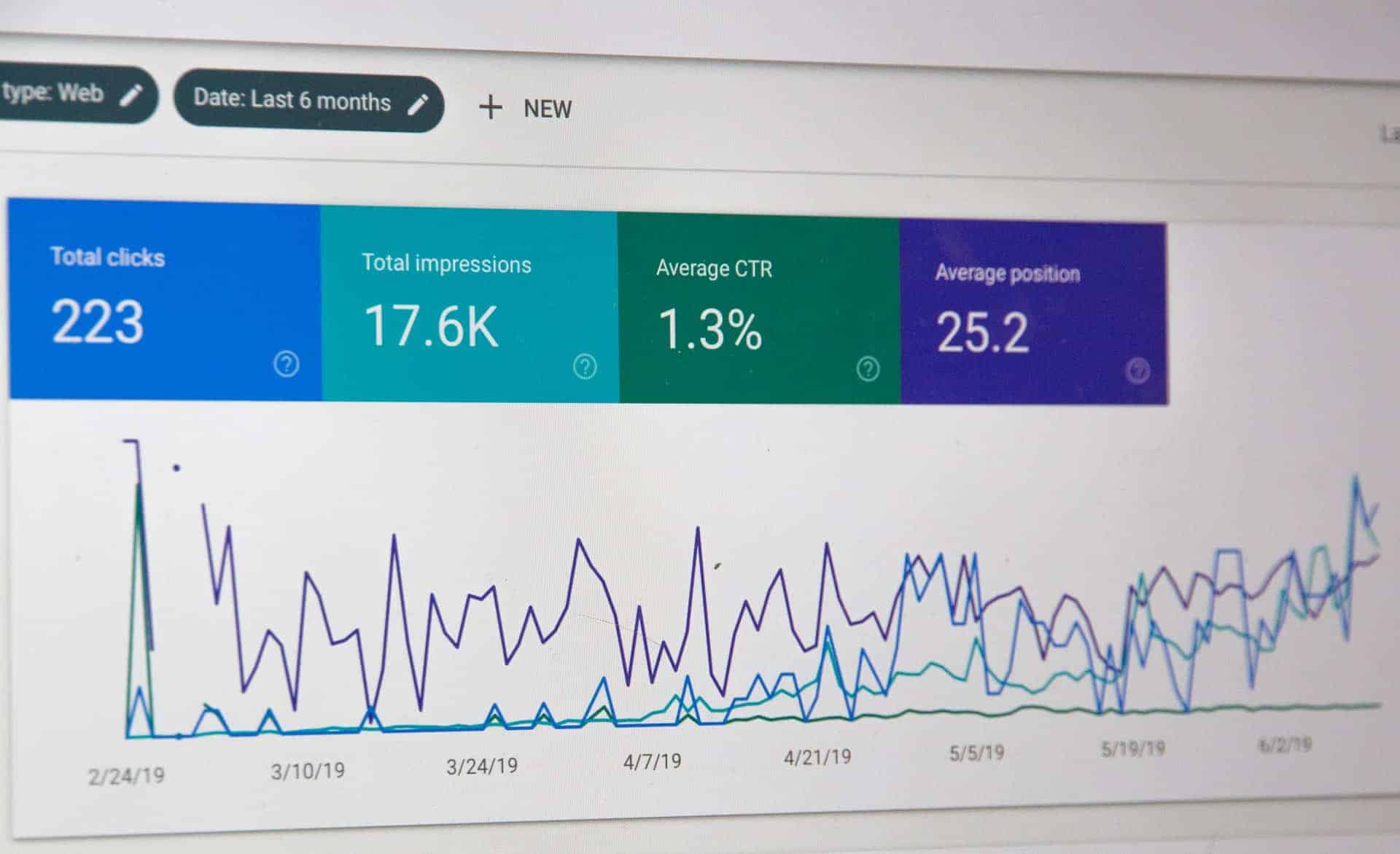Successfully marketing your brand or business online requires an understanding of the full impact of social media on the bottom line.
This is especially true when your brand is experiencing a moment: a crisis, like marketing during coronavirus, or a new product launch, or a change in leadership. Marketing your moment, and turning it into momentum—that requires social media marketing, and the ability to measure how that marketing is progressing.
Yet, according to Social Media Today, 70% of online businesses that utilize social media as part of their marketing efforts don’t bother to measure ROI.
It’s pretty shocking to discover that so many businesses are conducting their social media marketing completely in the dark. But to be fair, it’s not entirely their fault.
Research firm TrustRadius found that demonstrating ROI is the number one challenge among marketers, with 60 percent naming this as one of their top three challenges.
The fundamental problem with social media marketing is that there is no real common denominator to measure its ROI. And because of this, the effectiveness of social media has, at best, been measured haphazardly.
So how exactly can you tackle this challenge?
Here are 51 ways of measuring ROI to gauge a social media campaign’s success.
1. Change in Sales and/or Revenue
This is probably the simplest metric in our list. Has there been a significant increase in your sales and revenue numbers since you began utilizing social media marketing? Accounting for other factors that impact your business including other marketing campaigns, take a look at your sales figures and how they correspond with a new or increased social media presence. For non-profits, you can measure the number and size of donations.
2. Quantity of Fans and Followers
Some will argue that this metric doesn’t tell you much, and to some extent they’re right. A large number of followers is not an automatic indicator of a successful social media campaign, and getting fans and followers is only the beginning when it comes to social media participation. Once you’ve got them, you need to be able to create some sort of tangible benefit — whether you’re trying to sell more products, recruit more employees, or reduce your volume of customer service calls. However, a large fan base can be a very significant component of determining social media ROI, as a larger audience means a broader reach and more opportunities to engage with a customer base.
3. Quality of Fans and Followers
The quality of a social media following can generally be measured by their participation. Do you have a huge group of thousands of fans that don’t interact with your posts very often, or do you have a few hundred fans that “like” and comment on your content on a regular basis? While a large following is good, a smaller but more active number of fans could be argued by some to be more valuable. What do we think? Aim for quantity and quality.
4. Number of Comments or Replies Per Post
How followers respond to your posts on social media is a reflection of engagement and visibility by your community. Comments and replies on a post serve as quantifiable evidence that fans are not only receiving your message, but that they are interested and engaged with your content enough to want to connect and interact with your brand. A higher the number of responses can generally be taken as a sign of effective communication.
5. Amplification Rate (Shares and Retweets)
The amount of fans and followers you have is important, but even more valuable are the fans who have large groups of followers themselves. These people — your followers’ followers — comprise your second level network, a group of people you don’t have access to unless your social media content is deemed valuable and engaging enough to be shared by your primary network. Suddenly, you gain exposure to a much larger audience.
6. Number of Favorites, Likes, and Shares
Taking these statistics into consideration can give you insight into whether your content and posts align with what your audience wants. If a post or topic receives few to no likes on a social network, it’s probably a good indication that the content you’re sharing isn’t resonating with your audience. On the other hand, if a post gets a large number of “likes” on Facebook or retweets on Twitter, you’ll want to take note of what you did to succeed in getting this response. Fans giving approval to your posts can have an additional benefit: when a user “likes” one of your posts on Facebook, this action may show up in a friend’s activity feed, increasing your reach.
7. Number of Social Media Mentions
This is a pretty basic measurement: how often are people talking about your brand? If you’re rarely mentioned in social media, the good news is that nobody on social media sites has anything bad to say about you — however, it also means that nobody wanted to share anything positive about you, either. An increase in social media mentions can be a sign of a growing awareness of your brand.
8. Sentiment of Social Media Mentions
Although some people are fans of the idea that there’s no such thing as bad press, we tend to disagree. This is another instance in which quality is just as important — if not more so — than quantity. A social media campaign should at some level, depending on your ultimate goals, strive to increase positive reception of your brand and company. If your social media goals are reputation or customer service oriented, this may be a major factor in your ROI equation.
9. Number of Mentions in News Media
Although people now consume their news in vastly different formats than they did in the past, mentions in the news are as important as ever — though the media and the delivery methods may have changed, people are still active consumers of information from news outlets. A successful, innovative social media campaign may earn news coverage — and news coverage can also influence the success of a social media campaign. Just as with social media mentions, news mentions can be a gauge of how often people are talking about your brand and your social media efforts.
10. Facebook Fan Loyalty
When a Facebook fan “likes” or com- ments on one of your posts, how likely are they to continue to engage with your brand? You may find that some users comment once or twice, only to fall inac- tive, but others will “like” or comment on almost every single post. This ratio of active followers to inactive followers will determine how far your content is likely to travel.

11. Fan and Follower Growth Rate Over Time
Even more important than the number of your fans and followers is the steadiness in your fan and follower growth rate. As your business grows, so should your audience. If you see a large growth of fans and followers at the beginning, only for those numbers to hit a plateau and hold steady or decline, you’ll need to reevaluate your efforts to connect with your audience.
12. Unfollow Rate
At regular intervals, you’ll want to track your unfollow or unsubscribe rate (services like Who.Unfollowed.Me can be used to track unfollows on Twitter, while Follow Meter can offer insights on unfollowers on Instagram). Why is this information important? While even successful social media accounts will often have a fairly steady rate of people who follow and then unfollow, especially while running a content or promotion, keep an eye out for a spike in people unfollowing your brand on social media. When this happens, you’ll want to evaluate your recent activity: have you changed your posting frequency? Did you decide to try a new strategy? If you start to do something that drives fans away, these metrics will let you know.
13. Votes Cast or Polls Taken
Customers enjoy knowing their input and opinions are being heard and valued. Facebook, Twitter, and YouTube allow you to create public polls for your fans. These polls are an excellent way to gain insight into consumer opinions — and the response rate is also a good measure of fan engagement!
Related post: 30 Facebook Posts That Drive Engagement
14. Number of Brand Advocates
A brand advocate is someone every company would love to have a fleet of: a vocal, loyal customer who routinely shares your content with their network. These people are an important part of your social media strategy, as they’re passionate and loyal. Additionally, the fact that they routinely share opinions on products and services means that their network likely views them as an influencer, and looks to them for insight before making a purchase — a benefit to your brand whether their network is in the hundreds or the millions. The more customers that you are successful in converting to brand advocates is likely related to the level of success of your social media strategy.
15. Contest Participation Rates
Contests and sweepstakes run through social media should encourage your audience to share photos, videos, or stories with you. They may even attract new fans or followers, or bring new subscribers to your email list. It’s important to measure the click-through rate of any links you posted to promote the contest in order to measure its success. Participating in contests and sweepstakes, especially the type in which users must create their own brand-centric or campaign-themed content (particularly popular on TikTok), has been shown to increase engagement and build brand loyalty. When more of your fans are actively participating in these promotions, you’re building a more engaged audience.
16. Email Subscription Conversions
One of the goals of many social media campaigns is to increase traffic to the company website. Once your social media visitors make it to your website, you should be striving to capture their email addresses — after all, email marketing can be an incredibly effective marketing tool. By measuring your email subscription conversions among traffic driven to your site (or a specifically created landing page) by social media, you can see which channels lead to more successful conversions and even measure your social media conversion rate against the conversion rate of your blog, for example.
Related post: Why Your Email Marketing Campaign Isn’t Working
17. Email Open Rates
Of course, your email subscription list doesn’t really matter if nobody is actually opening your emails. A low email open rate will let you know if your subject lines could use a little more spice, or if you’re bombarding your subscribers with an overwhelming influx of information. Comparing the open rates of subscribers who were driven by social media with the open rates of subscribers from other marketing efforts can give you insight into the engagement generated through your social media campaigns.
18. Quality of Leads
The definition of a high quality lead will differ depending on your individual business goals. However, your company should agree on one definition of a high quality lead at the outset of a social media campaign. If you’re gaining less than stellar leads from social media, try to determine why: are you targeting the wrong people? Is your ideal customer on a different network than the one you’ve focused on?
19. Website Bounce Rate
Take a look at your website’s analytics: when people click through from your Facebook page or Twitter profile to your company website, do the majority of them leave right away? Remember that ultimately, your website is your most important marketing tool. It’s great to get those fans and followers, but you really should be compelling them to click through to your website. If you’re experiencing a high social media visitor bounce rate, this can indicate a huge problem. You’ll want to reevaluate your site content and design to figure out why you’re not capturing their interest, as well as your social media campaigns to reexamine the customers you’re reaching.
20. Average Time Spent on Website
The time a visitor spends on your website is another metric that can easily be tracked through your site’s analytics. See how much time your social media visitors are spending on your site. You can then compare this to the time spent on your site of other referred visitors. If your social media referrals are spending significantly more time on your site, then you’re on your way to showing positive ROI.

21. Pages Per Visit
The number of pages a social media referral visits on your website is another metric that can be useful in determining how to communicate via social media channels. Take note of the pages that your social media audience is visiting most often. The information they are seeking from you is probably similar to what they are most interested in hearing from you on Facebook and Twitter. Is this the information you are giving them? If not, it may be time to recalibrate.
22. Number of Gated Content Downloads
If a visitor downloads a whitepaper or other piece of content that you produced, it stands to reason that they’re interested in your professional expertise on the subject you’ve written about. Not only that, but once they’ve downloaded your content, it’s on their computer or cloud drive for future reference — and so is your company’s branding, helping you to stick in the downloader’s mind as an authority on the subject in question. Take a look at not only the total number of your content downloaded but also the number downloaded by visitors referred by your social media campaigns.
23. Customer Acquisition Costs
To calculate customer acquisition costs, you first need an approximate number of customers that a specific campaign has referred to your company. Next, you must calculate how much money you spent on this specific campaign. If you divide the money you spent on the social media campaign by the number of customers acquired, you get the cost per customer. Compare this to the amount it costs you to acquire a customer through traditional methods: is it more or less?
24. Ad Value of Incoming Traffic
There is a relatively simple way to assign a monetary value to your social media referral traffic: use an assigned ad value as a benchmark by calculating how much money you would have spent if those visitors had been referred to your site by pay-per-click (PPC) ads. Of course, this is only an approximate value, since social media and PPC are not the only two sources of site traffic.
For example:
- A PPC ad for your target audience costs $2.
- You received 50 visitors today from a link you posted on Twitter.
- The value of 50 visitors referred by that PPC ad (50 x $2) is $100.
In this example, you would have received approximately $100 worth of traffic from Twitter today. You now have a standard against which you can compare your social media campaign to measure relative ROI.
25. Number of Likes and Repins on Pinterest
Pinterest has a lot of potential for image-based marketing. Not only can you pin images from your own site, you can also check to see how often visitors are pinning content directly from your site: just type Pinterest.com/Source/[YourSite].com into your URL bar (for example, we would type in Pinterest.com/Source/ZenMedia.com). Pins on Pinterest seem to have a long shelf life. Whereas a tweet or Facebook post may be pushed out of a user’s timeline within an hour, pins on Pinterest are often repinned across the site for weeks.
26. Change in Brand Perception
People often take to social media to air their opinions. While you shouldn’t necessarily directly engage with every customer who posts a complaint, your goal can be to try to change their perception of your brand. Although responding to negative comments on social media can be an important piece of a customer service strategy, posting about your community involvement and employee recognition can also help improve your brand perception. If your employees feel appreciated and get custom awards, they will be more dedicated and motivated to provide excellent customer service By tracking keywords your audience commonly uses in conjunction with your brand name, you can track the change in your brand perception.
27. Blog Interaction Rate
The interaction rate for your blog may be a combination of a few different measurements. For example, a user may choose to respond to your blog by commenting directly, or they may mention your blog or a specific post on Twitter or LinkedIn instead. If your blog comments are turned on and you’re encouraging readers to interact with you in every single post, remember that blog interaction is only a component of your ROI equation. Make sure that you’re giving your followers every opportunity to help make your blog part of a successful social media campaign.
28. Number of Blog Views
While blog interaction rate can be an effective indicator of social media ROI, there are Internet users out there who rarely comment on blog posts, no matter how interesting the content may be. The fact that they aren’t interacting doesn’t mean that you’re not effectively reaching them. Measuring your blog views, especially if individual visitors spend a significant amount of time on the blog and view more than one page, will let you know if your content strategy is currently succeeding or falling short.
29. Number of RSS Blog Subscribers
RSS blog subscribers will tell you a lot about how successful your blogging efforts are because these are the people who enjoy your content so much they’ve decided they need a direct feed of your updates. The better your blog content, the more RSS blog subscribers you’ll have.
30. How Far Your Tweets Traveled
By using a free service like TweetReach, Crowdbooster, or Timely.is, you can see how many Twitter users have been exposed to your last 50 tweets. This metric takes into consideration factors such as your Twitter followers, as well as the retweets and mentions your posts have received, giving you a snapshot of one type of amplification.
31. Any Change in Search Ranking
A social media marketing campaign should be integrated with all other aspects of marketing, including search engine optimization. Social media activity can affect search activity in a variety of ways, and this is especially true for your company’s blog. When you adhere to SEO best practices, while writing valuable and engaging content for your blog posts, you can help improve your ranking for some of your main keywords, or even rank for new ones. A higher search ranking means more exposure for your website and brand and can be a good indication that your social media marketing campaign is effective.

32. Number of Clicks on Posted Links
Early on in the process of establishing a social media campaign, it’s essential that you get in the habit of implementing tracking for all links you post on your social media networks. You most likely know that to increase fan engagement, you don’t only want to post links that direct back to your own content — you also want to post information of interest to your target audience from other sources. However, you should be tracking all posted links to see which ones pique fan interest, and which ones are failing to generate responses.
If you use a social media dashboard to automate your posting, such as Hootsuite or TweetDeck, this tracking capability may come built-in. In addition, many URL shortening services provide free or cheap link tracking features. This is an important step in figuring out how to interact with your audience — make sure not to overlook it.
33. Hits on Social Media Landing Pages
Many companies are now adopting the strategy of creating specific landing pages for referral traffic from each of their social media profiles. This allows you, for example, to provide different content to a LinkedIn referral than to a Facebook referral. You can track hits on these landing pages and also track activity after a user arrives: bounce rate, pages per visit, etc.
34. Social Media Hits to Store Locator Pages
This metric is extremely important for businesses with brick-and-mortar locations to pay close attention to. When tracking the activity of social media visitors to your website, take note of how many of them visit the store locator page of your site. This offers you a rough sense of how many of these users are planning to come visit you. Since customers now have Google Maps and GPS navigators for assistance, all potential visitors may not employ this method to get directions to you — but many still do, and it’s a statistic worth paying attention to when figuring out social media ROI.
35. Number of YouTube Video Views
When trying to determine the popularity of your YouTube videos, the more straightforward metric is the number of views each video receives. Video content helps your audience connect on a more personal level with your brand, so more views should be a representation of more social media-driven engagement with your brand.
36. Number of Backlinks to your Site
Google Webmaster Tools is one of the many existing services that allow you to monitor the sites that are linking back to your page. This allows you to track how often you’re being mentioned on blogs, and how much traffic these links are driving to your page. You’ll also be able to discover brand advocates and noteworthy bloggers to further develop relationships with, while getting a sense of how far your social media content is truly traveling.
37. Influence of Bloggers Reached
A good social media PR campaign should include influencer outreach. Who you target depends on your product or service, but nearly every niche has, at least, a handful of influencers with a massive following. When an influencer mentions you positively on their site and their social networks, you may be exposed to their hundreds of thousands of loyal readers, so keep track of who is spreading the word about your brand on social media.
38. Number of Check-ins on Geolocation Services
Geolocation services, like Foursquare, Yelp!, Google Places, and Facebook, are great platforms for brand awareness and increased exposure for brick-and- mortar businesses. Check-ins on geolocation services can tell you which promotions are working. Users leave tips, which essentially serve as mini-reviews of your business. Sometimes, people who check in on these services share their location, exposing your brand to their entire friend network and essentially indirectly (or directly) recommending your business simply be announcing their patronage. Although ROI for these types of services can be more difficult to measure than other social media metrics, since the referral source isn’t always clear, you should encourage people to check in at your location and keep tabs on check-in trends as you ramp up your social media efforts.
39. Sentiment of Reviews on Review Sites
Your ratings on review sites, like Yelp!, Trustpilot, Facebook, and Google Maps, are extremely important. Many social media users now hold these ratings to the same standard as a recommendation from a close friend. Monitor what people are saying about your company. Repeat complaints starting to pile up may mean it’s time to take a serious look at your operations, and review the effects of your social media campaigns on your company’s image.
40. Increased Quantity and Quality of Job Applicants
The main goal of the early stages of a social media recruiting campaign should be to increase the number of high-quality candidates who apply for your open positions. Your focus should be on recruiting both quantity and quality; if you’re not getting both, your campaign may need adjusting. While recruiting your financial team, you might focus on their financial certifications and experience to shape experienced and knowledgable team.
41. Number of Unsplash Photo Views and Downloads
It’s true what they say: a picture’s worth 1,000 words. Many companies successfully use photo sharing sites to add a visually-focused element to their social media campaigns. And right now, there’s probably no better place to curate and share your photos than Unsplash. The measurement of your Unsplash photo views and downloads will let you know if your audience cares about what you’re “saying” with your photos.

42. Offline Event Impact on Social Media Behavior
If you’re a business holding an event in conjunction with a related hashtag (especially pertinent for trade-show or webinar attendees), track how many offline visitors adjusted their online behavior to reflect your social media campaign. A high offline attendance rate with a low online participation rate will let you know that something’s wrong with your digital PR.
43. Change in Customer Service Costs or Quality
By using social media to handle some of your customer service work, you may reduce some traditional customer service costs, such as inbound calls, emails, and live chats. By taking your average cost per call or email, you can easily calculate your customer service cost savings — just track the change in volume of customer service calls or emails. Additionally, you can send a follow-up survey to followers who’ve interacted with your brand’s social media customer service accounts to find out if this method of problem resolution results in more satisfied customers.
44. How Your Efforts Compare to Your Competitors’
Checking where your social media measurements stand in comparison to those of the competition can help answer some questions about your social media campaigns. If you’ve set a goal for a number of Facebook fans you’d like to have, and you’ve fallen drastically short, take a look at your competitors’ Facebook pages. If they have a comparable amount of Facebook fans, it’s possible that your specific niche is still developing in regards to connecting with your audience via social media. However, if your competitors are miles ahead of you, it could indicate something wrong with the way you’re executing your campaign and warrant a review of your methods or content.
45. Improved Insight into Customer Wants and Needs
Though not necessarily easy to assign a monetary value to, improved insight into what your customers want is an invaluable benefit. By tapping into where your customers are having conversations, you can learn more about their wants and needs than you ever could before. You could use this as an inexpensive form of market research, supplementing or replacing often expensive traditional focus groups. By evaluating how your understanding of your customer base’s desires has changed, you can gain valuable insight into the effectiveness of your social media campaign in this respect.
46. Social Feedback that Led to Implementation of Policy or Service Changes
With this improved insight into customer wants and needs, you may be bombarded with customer feedback — positive, negative, and constructive criticism. Often, companies will take negative feedback or constructive criticism, and use it to implement change that benefits both the company and its customers in the long run. By doing this, you’ll have improved customer satisfaction and (again) saved money that you would have spent on research and development to reach the same conclusion. Positive changes due to social media feedback are one important way of gauging effectiveness of social media campaigns.
47. Social Media Exclusive Coupon Codes
Offering an exclusive coupon to your Instagram or Twitter followers can help you directly track your social media sales. When a user inputs this coupon code at checkout, you’ll immediately know they were referred from a social media site. You can also do this if you’re a business with a physical location by sharing printable coupons, or share a “password” that customers can mention to the cashier to receive a discount — just ensure all your salespeople fully understand the promotion. In addition to how many codes are redeemed, take note of overall traffic and sales numbers during the time period that these coupons are being redeemed.
48. New Customer Referral Surveys
Just because customer referral surveys seem low-tech, it doesn’t mean they’re an ineffective means of measurement. For example, a physician or similar service provider could overhaul your new client paperwork to include a place to indicate where these people heard about you. Similarly, e-commerce stores could provide a drop-down menu of referral options for customers during checkout. These responses can help you get an approximation of how much of your new traffic is being driven through your social media efforts as opposed to other referring sources or campaigns.
49. Customer Retention Rate
It is typically more profitable to keep current clients happy and loyal than to acquire new ones. If your business maintains a database of clients, measuring the retention rate of social media followers and referrals versus other customers is one of your most valuable metrics when measuring ROI. Why? Once you’ve created customer loyalty, you can calculate customer value: the average amount a repeat customer spends, multiplied by the average number of times a year a repeat customer shops with you. This gives you an idea of how valuable the individual customer will be — and that’s just for the next year.
50. Improved Customer Experience
By monitoring brand sentiment or sending out surveys to those who’ve interacted with your social media customer service team, you can track how your campaign is affecting overall customer experience. A happy customer is more likely to be a loyal customer — it’s that simple. Loyal customers can eventually become brand advocates, and brand advocates can help you reduce the cost of customer acquisition through recommendations, and viral sharing. A social media campaign that is effectively improving your customers’ experiences with your brand is providing an extremely valuable service.
51. Your Online Reputation
Customers who’ve had a bad experience with a company now often take to social media to air their grievances. Not only that, but potential customers increasingly rely on social media recommendations from their networks. Basically, think about it this way: often, an angry customer is more likely to tell their friends about you than a satisfied customer.
If you intercept a customer complaint, the least you’re doing is protecting your reputation in the eyes of everyone else that sees that complaint. However, you could also be protecting your good name and changing brand perception for this customer, ensuring repeat business — or, at least, ensuring the negative feedback about your brand doesn’t spread. The value of retained customers and prevented damage is something that needs to be factored into the value of your social media campaigns.
Social media marketing has matured to a point where measuring ROI is a necessary aspect of the day-to-day agenda of any marketer. Once you know what to focus on and where to start, it eventually gets easier.
If you’re looking for more guidance with your social media or online marketing campaign, the team at Zen Media is here to help!
Yes, we can absolutely help you effectively and efficiently measure your existing social media initiatives. But if you’ve also been wanting to take your social media to the next level, we can help your brand reach millions and create massive waves of influence.
Contact us today to see how we can help your brand reach new heights!





